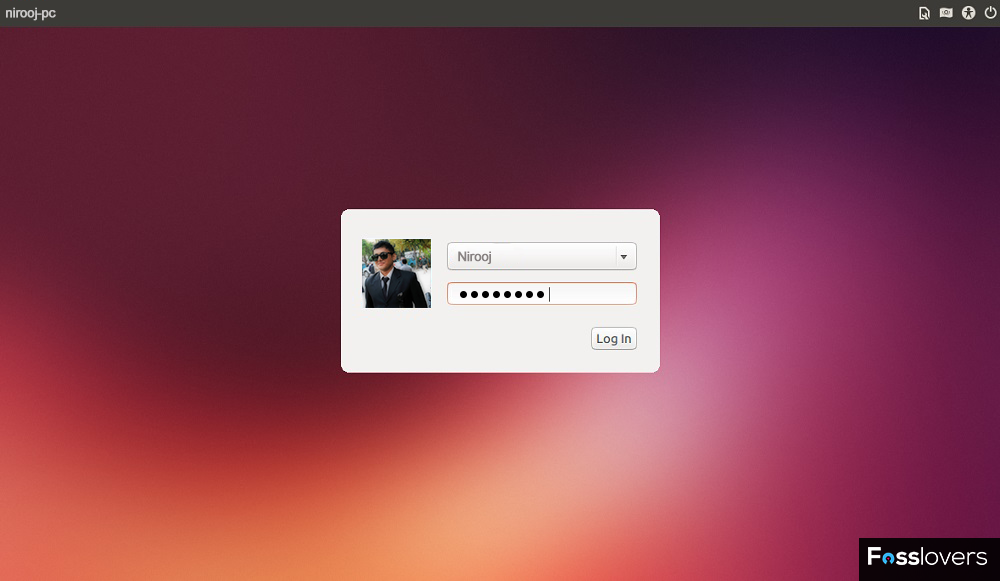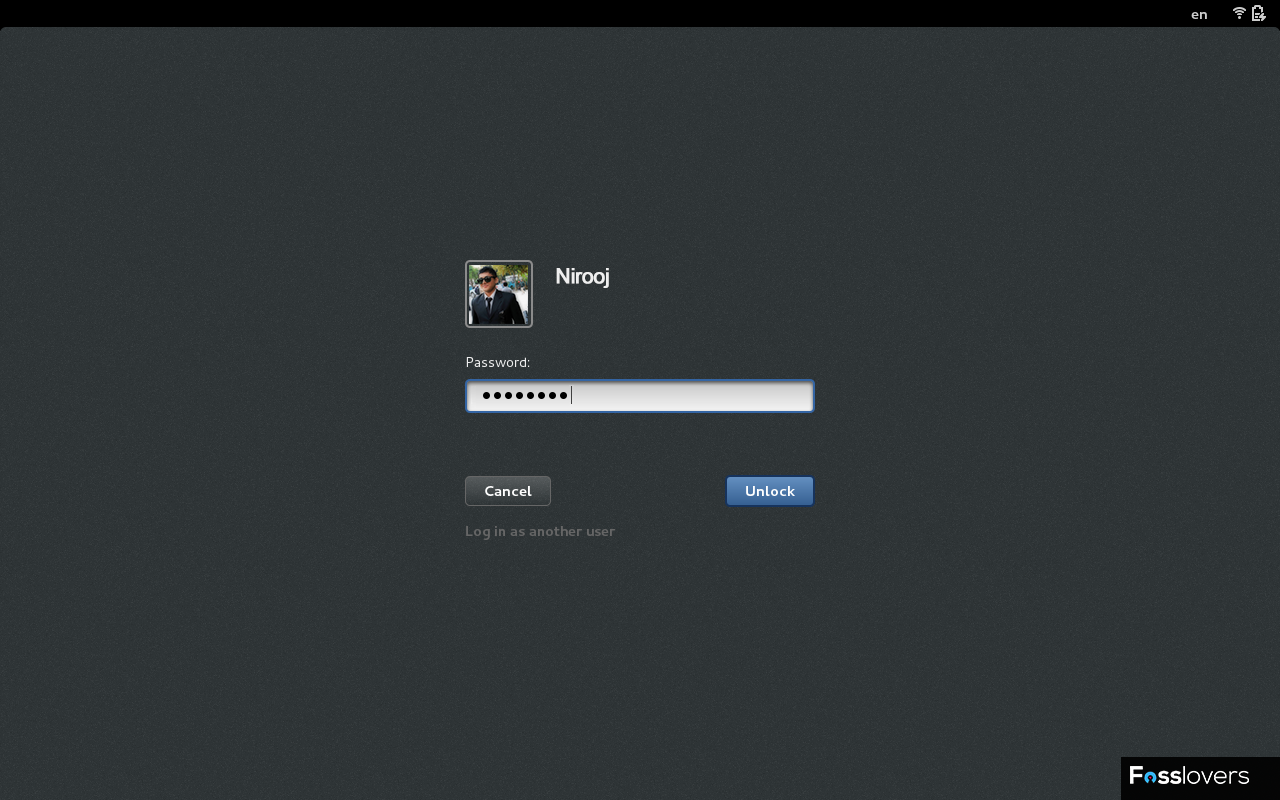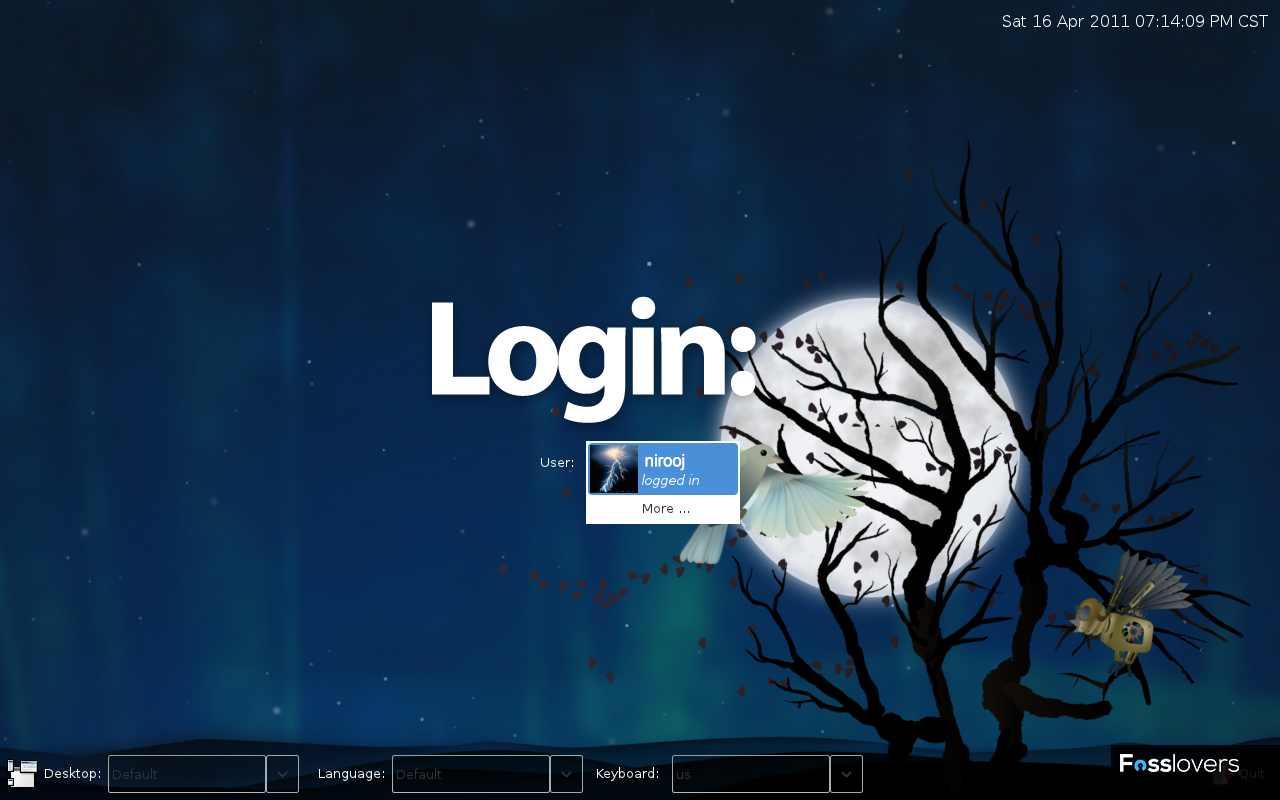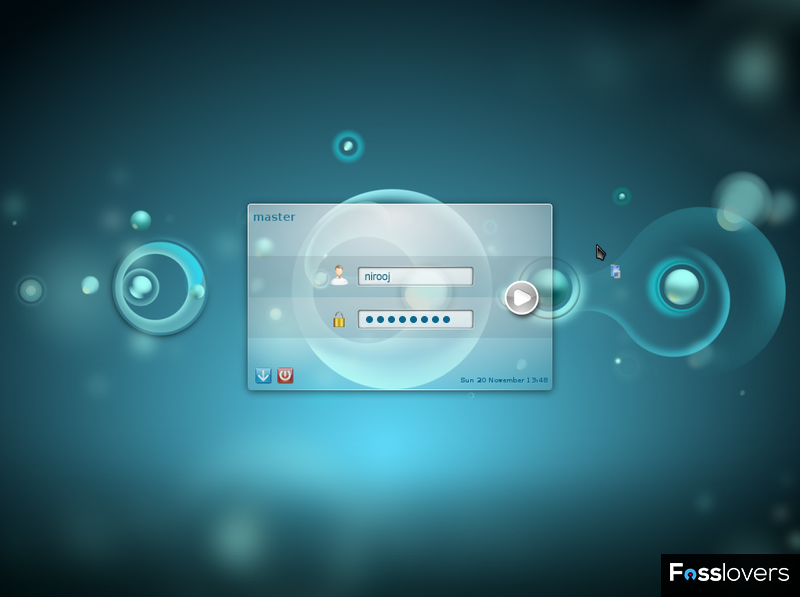Sometimes referred to as a “login manager”, a display manager is responsible for starting the display server and loading the Linux desktop after you type in your user-name and password. Simply put, it controls user sessions and manages user authentication. For the most part, a display manager performs its magic “under the hood”, and usually the only element you’ll see is the login window, also known as the “greeter”. Arch Wiki defines display manager as “A display manager, or login manager, is typically a graphical user interface that is displayed at the end of the boot process in place of the default shell. There are various implementations of display managers, just as there are various types of window managers and desktop environments.”
There are various display manager to give your system a unique taste while login.
Top Popular Display managers for GNU/Linux Distributions
LightDM

LightDM is a lightweight, cross-desktop display manager. Its main features are a well-defined greeter API allowing multiple GUIs, support for all display manager use cases, with plugins where appropriate, low code complexity, and fast performance. Due to its cross-platform nature greeters can be written in several toolkits such as Qt and GTK. It is default display manager for Ubuntu Systems with the default greeter called Unity Greeter.
To install Lightdm in your current desktop open Terminal (Ctrl+Alt+T) do the following:
Ubuntu/Linux Mint etc
sudo add-apt-repository ppa:lightdm-gtk-greeter-team/stable
sudo apt-get update
sudo apt-get install lightdm-gtk-greeterDebian
aptitude install lightdm
Fedora
sudo yum install lightdm
GDM

Gnome Display Manager also known as GDM can be installed with the gdm package, and it is installed as part of the gnome group. The GDM greeter program displays a panel docked at the bottom of the screen which provides additional functionality. When a user is selected, the panel allows the user to select which session, language, and keyboard layout to use after logging in.
To install GDM in your current desktop open Terminal (Ctrl+Alt+T) do the following:
Ubuntu/Linux Mint
sudo apt-get install gdmDebian
aptitude install gdmFedora
sudo yum install gdm
LXDM
 Lightweight X11 Display Manager (LXDM) was created for Lightweight X11 Desktop Environment (LXDE). It is a simple and lightweight Display manager out there.
Lightweight X11 Display Manager (LXDM) was created for Lightweight X11 Desktop Environment (LXDE). It is a simple and lightweight Display manager out there.To install LXDM in your current desktop open Terminal (Ctrl+Alt+T) do the following:
Ubuntu/Linux Mint
sudo apt-get install lxdmDebian
aptitude install lxdmFedora
sudo yum install lxdm
KDM

KDM standing for KDE Display Manager. It is written in C/C++ Language. KDM provides a graphical interface that allows you to log in to a system. It prompts for login (user-name) and password, authenticates the user and starts a “session”. kdm is superior to xdm, the X Display Manager, in a number of ways.
To install KDM follow the go to here.
There are other various Display Managers like MDM, SDDM, Entrance (Enlightenment), SLIM etc. Display managers plays a huge part while login. From back-end login process to front-end Graphical User Interface (GUI). So, Choose your Display Manager as you feel Comfortable with.
If you have any queries, suggestions, comments, please do let me know below. Thanks. :)


No comments:
Post a Comment